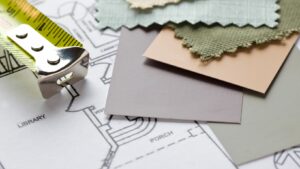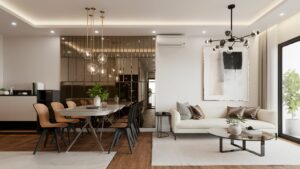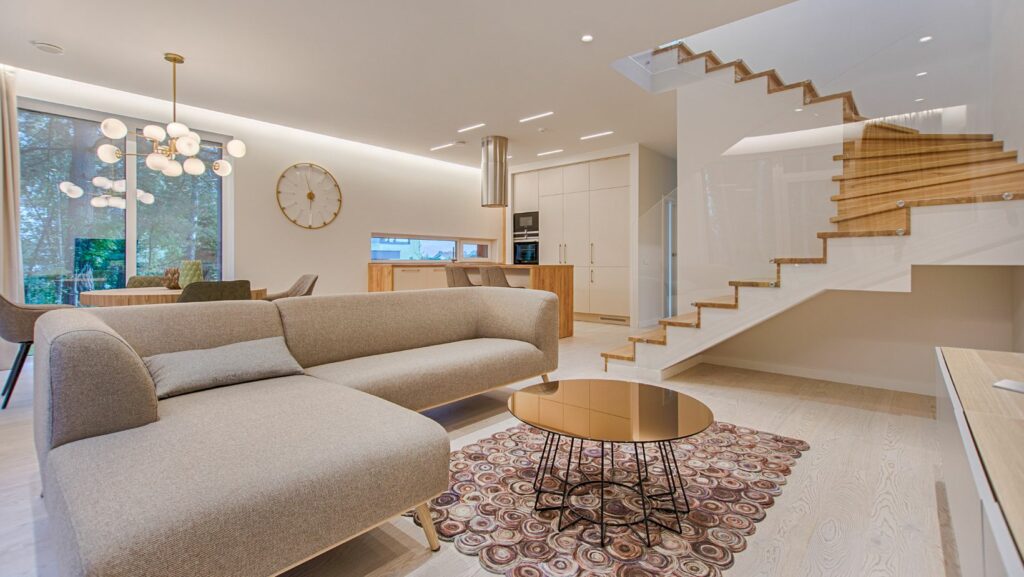Immerse yourself in the captivating realm of interior architectural design. It’s where art meets function, transforming spaces into living, breathing entities that reflect our personalities and lifestyles. This design discipline isn’t just about aesthetics; it’s a powerful tool that can impact our mood, productivity, and overall well-being.
Interior Architectural Design

In the ambit of interior architectural design, layout serves as a critical framework. It’s a studied mix of functionality, aesthetic appeal, and practicality driving structured spatial planning. Balance, proportion, and harmony ensure an inviting environment while scale maintains consistency in size and importance of architectural elements.
Light, whether natural or artificial, transforms spaces, adding depth to them. For example, daylight influences mood positively and contributes to sustainability whereas task lighting facilitates work productivity. Color palette also plays a significant role as warm tones, such as amber and beige, foster cozy atmospheres while cool hues like azure create serene ambiances.
Materials and textures, on the other hand, provide sensory experiences. For example, natural stone brings a primal touch to the space, and smooth silk imparts a sense of luxury. Furniture, fitting into the layout, complements overall ambiance. It’s crucial to remember, design doesn’t merely reflect personal style, it’s a place’s persona that intricately intertwines with users’ well-being.
Historical Influences on Modern Interior Design

Transcending mere aesthetic appeal, interior architectural design bears imprints of centuries-long cultural evolution, particularly evident in modern styles. Ancient Egyptian motifs, for example, serve as structural foundations, deeply embedded in present-day attributes such as geometric patterns and bold colors. Asian philosophy, citing sources like Feng Shui, significantly shapes spatial harmony, fostering a balanced, minimalistic approach. It isn’t uncommon to encounter Greek classical influences—think tall columns, detailed stonework, and refined symmetry—in contemporary properties. Rediscoveries during Renaissance, illustrated by maximized natural light usage or dome-like structures, still resonate within 21st-century spaces. Twentieth-century movements, where Bauhaus’ simplicity meets Mid-century Modern’s organic functionality, mix tradition with innovation, shaping truly transformative environments.
Essential Elements of Interior Architectural Design

Interior architectural design comprises several key elements, the crux of forming charismatic spaces that resonate with personalities living within them. These elements comprise light, texture, pattern, color, and line.
- Light:
Natural or artificial, light significantly affects mood, perception, and visual comfort. It influences how textures, colors, and spaces are perceived. For instance, installing a roof skylight can enhance natural lighting, creating a more open and inviting atmosphere. Low lighting might create an intimate, relaxing ambiance, while bright light amplifies energy levels. - Texture:
An understated but persuasive element, texture enhances the depth of a room. Examples include sleek marble counters, grainy wood floors, or plush velvet sofas. It’s not only the tactile sensation but also its visual impact that matters. - Pattern:
Patterns lend character and cohesion to a room. Examples could be a geometric rug design or floral motifs on wallpapers. Well-coordinated patterns bring visually pleasing consistency to spaces. - Line:
Lines, horizontal, vertical, or dynamic, blueprint the shape and form of a room. Horizontal lines could be evident in tables and shelves, vertical in doors and windows, and dynamic in staircases. Managed adeptly, lines lead the eye and harmonize space perception.
Trends in Contemporary Interior Architectural Design
As we’ve seen, interior architectural design isn’t just about aesthetics; it’s a blend of artistry and practicality. It’s about creating a space that’s not only visually appealing but also reflects the inhabitant’s lifestyle and emotional landscape. It’s about understanding and implementing key elements like light, texture, pattern, color, and line to shape the ambiance of a space. It’s about recognizing the influence of historical movements and using them to inform modern designs.
Today’s interior architects are pushing boundaries, creating timeless spaces that embody individuality and are tailored to specific lifestyles. They’re crafting environments that impact our emotions and well-being, proving that interior architectural design is more than meets the eye. As the field continues to evolve, we can look forward to more innovative, personalized, and emotionally resonant spaces in the years to come.

